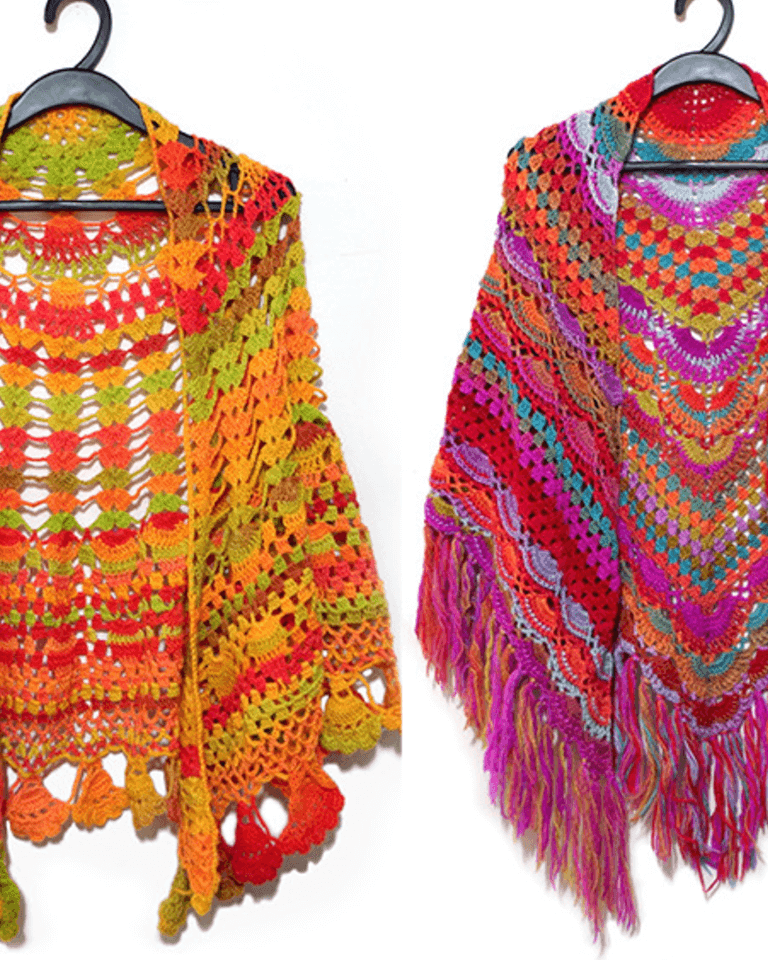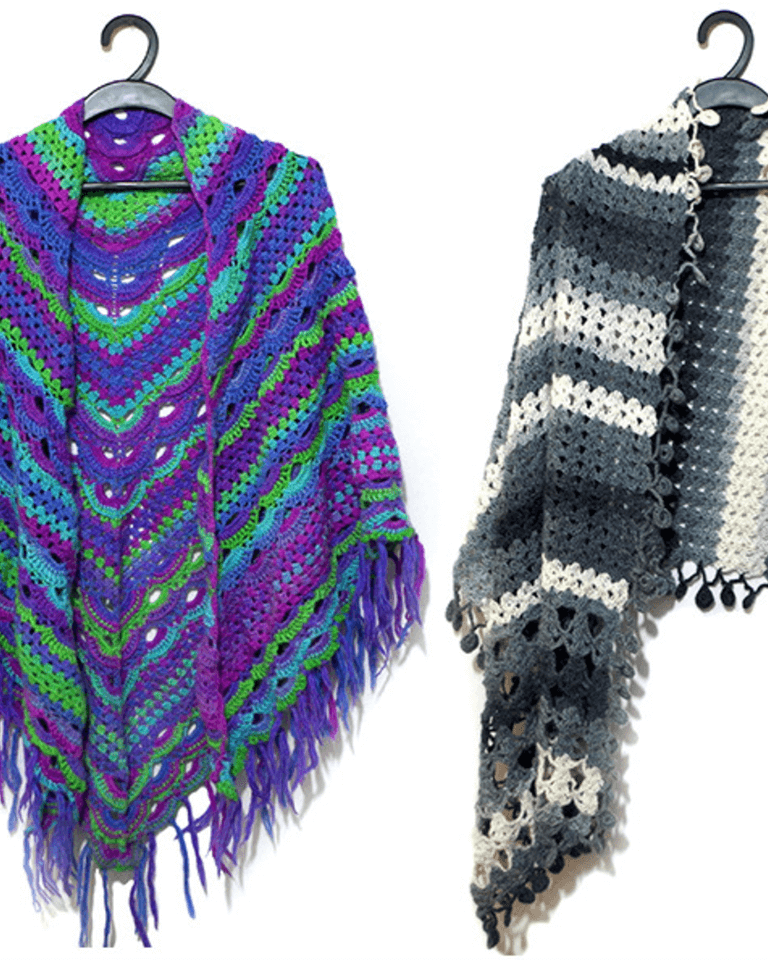
Understanding Wool: Types and Characteristics
Wool is a natural fiber that has been utilized for centuries, particularly in knitting, due to its unique properties. Various types of wool stem from different sheep breeds, each carrying distinct characteristics that influence their suitability for various projects. Among the most prized types of wool globally, Merino, Shetland, and Alpaca are noteworthy for their quality and properties.
Merino wool is renowned for its exceptional softness and fine texture. Sourced from Merino sheep, this type of wool is highly desired for next-to-skin garments because it minimizes itchiness, making it ideal for lightweight sweaters and accessories. Additionally, Merino wool excels in moisture-wicking capabilities, providing warmth even when wet. Its natural elasticity allows for significant stretch and recovery, contributing to the longevity and shape retention of knitted items.
In contrast, Shetland wool, derived from the Shetland Isles’ distinctive breed of sheep, is slightly coarser than Merino but exceptionally warm and durable. This wool’s rich history and traditional use in intricate Fair Isle knitting techniques make it a favored choice for textured patterns and colorwork. Shetland wool possesses a unique tensile strength due to the structure of its fibers, enabling it to withstand wear while maintaining its insulating properties.
Alpaca wool is another popular alternative to traditional sheep wool, sourced from the fleece of alpacas. This type is famed for its luxurious softness and warmth, often being compared to cashmere. Alpaca fibers are naturally hypoallergenic and do not contain lanolin, allowing for excellent comfort for those with sensitive skin. Available in various colors, this wool brings versatility to knitting projects, from stylish garments to home décor items.
The source of wool greatly influences the fiber’s quality and characteristics. Factors such as climate, diet, and husbandry practices affect the fiber’s fineness and strength. Thus, understanding the diverse types of wool can aid knitters in selecting the most appropriate material for their specific needs, resulting in projects that are not only beautiful but also functional and enduring.
The Production Process: From Sheep to Yarn
The journey of knitted wool begins with sheep farming, where the coveted fleece is carefully harvested through a process known as shearing. This typically occurs once a year, allowing farmers to collect the high-quality wool while ensuring the comfort and health of the sheep. The shearing process requires expertise to minimize stress for the animals and yield clean, unblemished fleece.
Following shearing, the raw wool requires thorough cleaning to remove grease, dirt, and any impurities. This stage, known as scouring, involves washing the fleece in hot water mixed with a gentle detergent. After washing, the wool is dried and prepared for the subsequent steps. Specifically, the wool must be carded, which involves disentangling and separating the fibers, allowing them to achieve a fluffy texture. Carding can be performed using hand tools or special machinery that efficiently aligns the fibers beforehand.
Next comes the dyeing process, wherein the wool is transformed into a range of vibrant colors. This can be accomplished using synthetic or natural dyes, depending on the desired effect. The dyeing process not only adds aesthetic value but also allows artisans to express creativity in their knitted designs. Once dyed, the wool undergoes another wash to set the color and remove any residual dye that may affect the final product.
The concluding phase of the wool production process involves spinning, where carded or dyed wool is twisted and drawn into continuous strands, creating yarn. This transformation is crucial as it prepares the wool for various knitting projects, each selected according to the desired texture and thickness. The produced yarn can be left in its natural state, or further processed, depending on the needs of the knitters. Ultimately, what starts as raw fleece transforms into a versatile material that can be used in countless creative designs.
Sustainable Practices in Wool Production
As the demand for environmentally friendly products grows, sustainable practices in wool production have gained significant importance. Wool, being a natural, biodegradable fiber, inherently carries advantages over synthetic materials. However, the impact of its production process raises critical questions about ethical practices, animal welfare, and environmental sustainability. Transitioning towards sustainable methods not only benefits the planet but also enriches the integrity of the wool industry.
Ethical wool production begins with caring for the sheep. Responsible farmers prioritize animal welfare by ensuring that their flocks are treated humanely and are provided with adequate living conditions. This encompasses proper nutrition, veterinary care, and ample space for grazing. Moreover, implementing practices that minimize stress during shearing and promoting breeds that thrive in specific environments can lead to healthier animals and higher quality wool.
Environmental impacts also play a significant role in sustainable wool practices. Practices such as organic farming methods reduce the reliance on chemical fertilizers and pesticides, resulting in healthier soil and ecosystems. Producers are encouraged to adopt rotational grazing techniques, which can promote biodiversity, enhance soil health, and decrease land degradation. These practices not only support the land but also reduce the carbon footprint associated with wool production.
Moreover, responsible sourcing emphasizes transparency within the supply chain. Consumers are urged to seek wool products from certified brands that adhere to ethical practices and sustainability standards. By choosing responsibly sourced wool, individuals contribute to an industry movement that values sustainability and animal welfare. This shift brings about a myriad of benefits, enhancing consumer trust and fostering awareness about the environmental challenges faced by traditional wool production methods.
Ultimately, a commitment to sustainable wool practices is essential for the future of the industry. By embracing ethical farming, organic methods, and transparent sourcing, producers can significantly mitigate the environmental impacts of wool production while offering superior, eco-friendly products to consumers.
Knitting Techniques and Their Influence on Wool Performance
Knitting is an intricate craft that employs various techniques and stitches, each significantly influencing the performance, texture, and overall appearance of finished wool products. The choice of knitting method plays a vital role in how the wool behaves, considering its elasticity, breathability, and insulation properties. Fundamental techniques such as garter stitch, stockinette stitch, and ribbing introduce distinct characteristics to the final knitted fabric, impacting its drape and stretch.
The gauge, which refers to the number of stitches per inch, also plays a critical role in determining the fabric’s texture. A tighter gauge can result in a sturdy, dense fabric, while a looser gauge enhances softness and flexibility, making the wool drape more fluidly. Additionally, the selection of yarn weight, ranging from lace to bulky wool, must be aligned with the chosen knitting technique to achieve desired results. For example, finer wools often benefit from intricately detailed patterns, while thicker fibers may yield more simplistic designs that showcase the wool’s natural beauty.
Moreover, the finishing techniques post-knitting, such as blocking or steaming, further influence wool’s performance by allowing the fabric to relax and assume its final shape. These processes can enhance the appearance of knitted wool by smoothing irregularities and revealing intricate stitch details. Different types of wool, such as Merino or Shetland, offer unique properties that complement specific techniques. For instance, the softness of Merino wool makes it ideal for close-fitting garments, while Shetland’s robustness allows for more durable, textured patterns. The right combination of knitting techniques and wool type can yield exceptional results, enhancing both durability and aesthetic quality.


